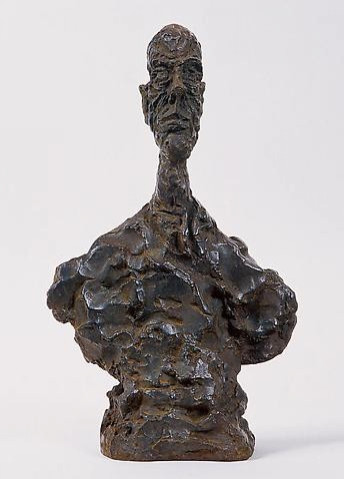Gagosian Gallery exhibits rare works by sculptor Alberto Giacometti

Relativity of all things, and the mountains in Stampa? They are here and they will remain, like the forests,
These words by the 20th century sculptor and artist, Alberto Giacometti, signify the intensity with which the small town of Stampa, where he was born near the Italian border, influenced his artistic creations.
Focusing on this intimate aspect of Giacometti's works, the Gagosian Gallery is presenting Giacometti in Switzerland exhibiting rarely seen sculptures, paintings, and works on paper by the artist, as well as documentary material drawn from the estate archives.
Curated by Véronique Wiesinger, Giacometti in Switzerland explores the fascination of the artist with his birth place and will be on view till March 5, 2011.
From its spectacular, almost anthropomorphic, mountainous landscapes to the incidental details of village streets, Stampa remained an inspiration to Giacometti throughout his life.
Born in 1901, Alberto was the eldest of four children born to renowned Post-Impressionist painter, Giovanni Giacometti.
From a very early age, his interest with art was very much evident. Following his education at the School of Fine Arts in Geneva, Alberto moved to Paris to study under the sculptor Antoine Bourdelle.
A key aspect of most of his creations is that he preferred models he was close to. In fact, many of his works like the plaster bust Tête de la mere (1927-1930) reflect the strength of his emotional attachment with his mother.
Buste d'Homme (dit New York I) (1965), on the other hand, was modeled after his brother Diego and some other male models while Buste d'Annette X (1965) was one of the many portraits that he made of his wife.
Giacometti in Switzerland is the first solo exhibition of the artist presented by the Gagosian Gallery, in which his work has featured prominently, encompassing the breadth of his prodigious career, from an early still-life drawing to the creation of the Buste d'homme in 1965.
© Copyright IBTimes 2024. All rights reserved.





















